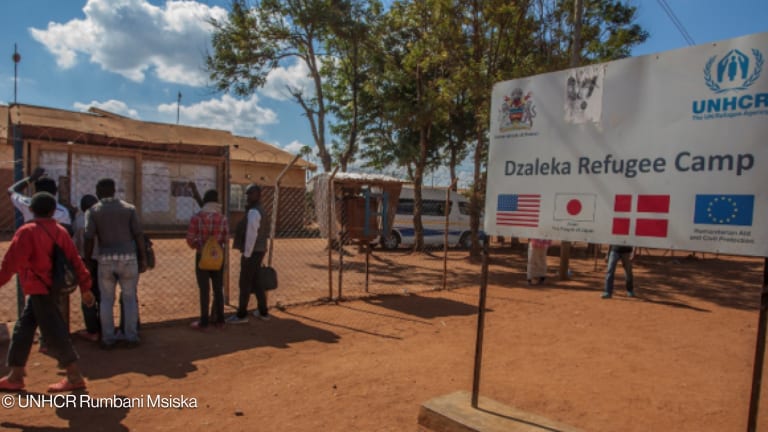My father often used to tell me about how, during the Second World War, he used to walk the many kilometers from the farm to school, past the camps of the occupying forces. It sounded noble and adventurous, almost romantic. When they first began at secondary school, my daughters groaned and moaned about the long distance they had to cycle. It wasn’t even five kilometers. In the car, I taught them a lesson in the car by driving the journey I used to bike every day to school — 15 kilometers each way, come rain or shine. They were impressed.
What would my daughters think if they had to walk with Chanceline for a day. Could they do it? Could I do it? A young mother from the Democratic Republic of the Congo, Chanceline is expecting her third child and is seven months pregnant. For her ante-natal visit, she has to walk to the nearest health center — some 27 kilometers each way. A motorbike taxi costs too much. While we may think it extreme and inhuman, Chanceline — walking in her flip-flops — thinks of just one thing: getting to the center before it closes.
Dec. 12 was Universal Health Coverage Day, the day on which the world was urged to provide affordable and accessible health care for all. On that day, Cordaid showed a video about the routine journey by Chanceline to the doctor. A video that lasts for almost five hours, following every step — through storms, the sun, the police checkpoints, the rain, the mud and her arrival at the place where she learns how she and her child are doing.
How will Chanceline later tell her children and grandchildren about her journeys to the clinic? About that one time with those strange Dutch people who filmed her to get attention for UHC? I hope it will be with some kind of nostalgia, but I fear it won’t.
The number of people who live in fragile states and countries in conflict continues to increase. In all the discussions about how many people should or should not be allowed to enter Europe, we forget that most of them stay where they are, or are taken in by neighboring countries. Despite the violence and the poverty, they want to get on with their lives; they have children they want to feed and raise.
According to the United Nations Population Fund, in fragile countries every day — day after day — 507 women and children die from complications in pregnancy. More than 53 percent of all children who die under the age of 5, die in countries in conflict. Two-thirds of the maternal deaths occur in countries in conflict and in camps accommodating persons displaced as the result of conflict or natural disasters.
Access to good health care is not just a question of doctors, pills and infrastructure. People have to be able to reach the clinics safely. They shouldn’t have to walk for hours and hours, pregnant and unprotected, like Chanceline did.
To achieve this, people have to be trained, systems reformed, priorities changed, corruption fought. And much more besides. You don’t have to start from scratch — we have been working on it for years and we are making progress. But “health care for all” will remain one of the biggest challenges in the coming years.
In countries like DRC, we should not work to rebuild old health care systems, we have to build new and better systems. Think differently, act differently. We have to get away from small, scattered projects with which politicians and donors want to show their own relevance. It is more than time for all stakeholders to join hands. Development workers, health specialists, governments and medical companies, we have all for too long been focused on our own hobby horses.
In 20 years time, Chanceline’s children deserve to once more make the same long journey their mother made when she was pregnant. Not because they have to, but to see what it was once like, back in “the good old days.” Let’s work on that.
To read additional content on global health, go to Focus On: Global Health in partnership with Johnson & Johnson.








